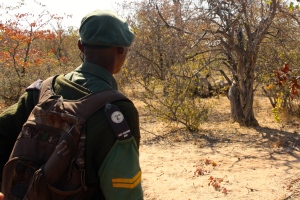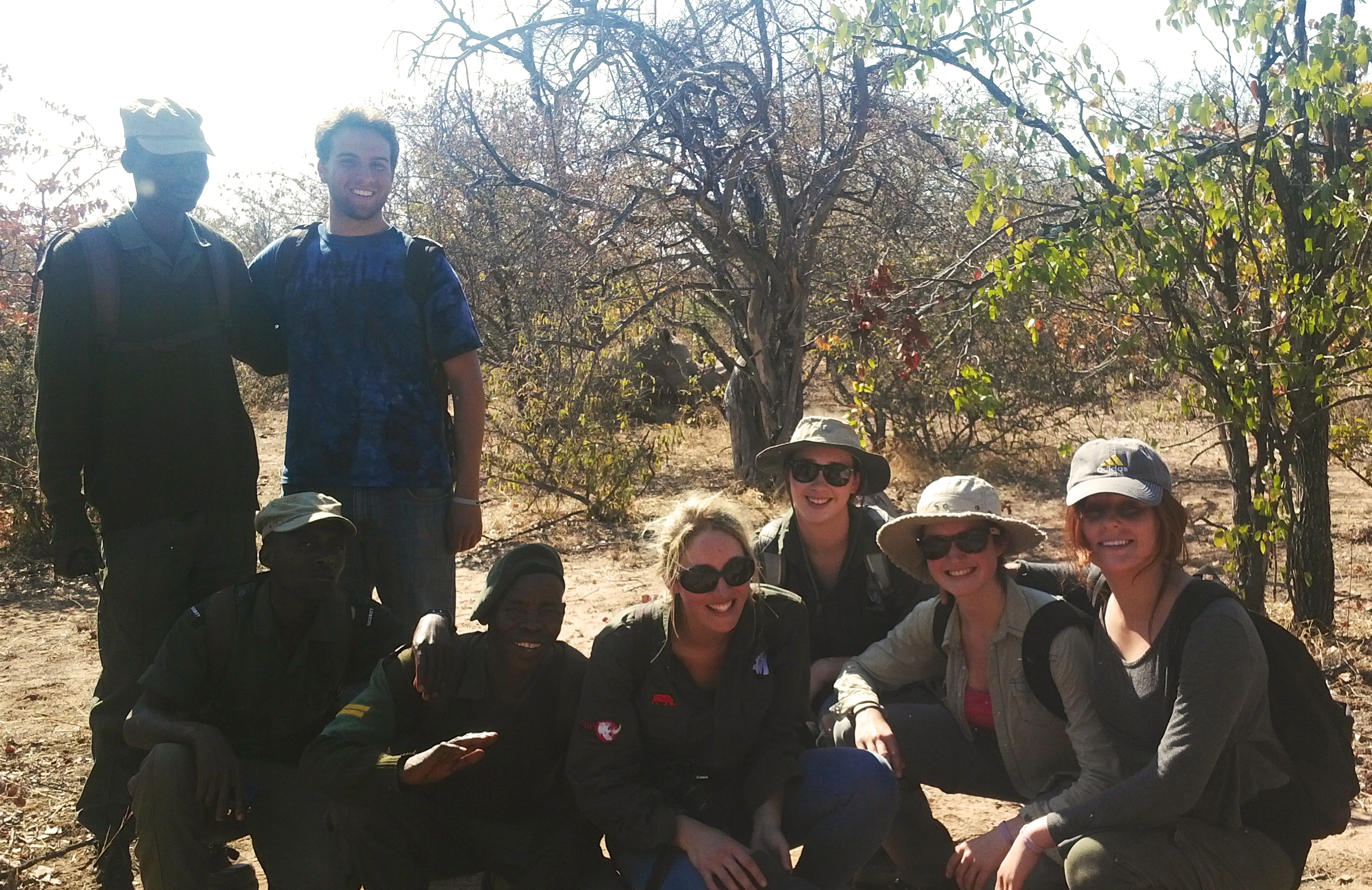The Essential Protectors of Our Rhinos
– Natalie Lapides
We made it to Botswana! We’re in Limpopo Lipadi Game and Wilderness Reserve, just over South Africa’s border.
 The upper part of the reserve where we’re staying has no lions, elephants, or rhinos. This means it’s safe to go for runs, so I’ve been running every morning before breakfast. I always get terribly distracted by all the tracks on the dirt roads, however—impala, kudu, hippo, leopard, warthog, and more—and slow down to examine or follow them. I just can’t keep up with the tracks while running in the semi-darkness of the early morning.
The upper part of the reserve where we’re staying has no lions, elephants, or rhinos. This means it’s safe to go for runs, so I’ve been running every morning before breakfast. I always get terribly distracted by all the tracks on the dirt roads, however—impala, kudu, hippo, leopard, warthog, and more—and slow down to examine or follow them. I just can’t keep up with the tracks while running in the semi-darkness of the early morning.
The members of the anti-poaching unit we have been shadowing, however, don’t need to slow down. The past three days, we have joined Limpopo Lipadi’s anti-poaching unit in their truck, riding into the middle of the bush before we jump out to track and check on the reserve’s rhinos.
These men are very skilled—we walk through bush, full of thorns, so quickly that I can barely keep up, and I don’t even have to pay close attention to tracks as I’m only following. The ground is hard red dirt, and the rhino’s tracks are distinguishable, but only barely. We walk in a straight, silent line, following two men who zigzag skillfully through the bush. Every once in a while, they point or call to each other about the tracks. All I can do is concentrate on following the person in front of me and on not getting stuck in the thick thorns, and then the next thing I know, I look up and see a rhino with her 2-year-old calf.
The cow seems quite relaxed with us, though we were less than 50 meters away. She continues to graze calmly. Her calf, however, eyes us curiously as he wanders in circles around his mother. The anti-poaching guys watch them contentedly, glad to see that she’s doing well. They explain to us that the cow had a sore foot that is now much better, though her calf is still very protective of her. He only relaxes once we start heading back to the car about fifteen minutes later, then goes back to grazing at his mother’s side.
He is quite large, and weaned by now, but remains with his mother, as he is too young to be on his own yet. Rhinos nurse for a long time—16 months—and then remain with their mothers for 2-5 years, until she gets pregnant again. The mother-calf relationship is key to the calf’s growth into a normal, healthy adult rhino.
Unfortunately, mother rhinos or pregnant rhinos are much more easily poached: they need to be near water, and pregnancy or a calf by their side will slow them down. This frequently leaves calves as collateral damage in a poaching. The calves, often left injured by poachers, are suddenly alone, injured, and traumatized. Luckily, places like the Rhino Orphanage, where we were lucky enough to visit and help out (see Steven’s post), exist, but they still can’t replace a mother’s lessons and love. I’m glad that the rhinos here have such a great anti-poaching unit protecting them.
